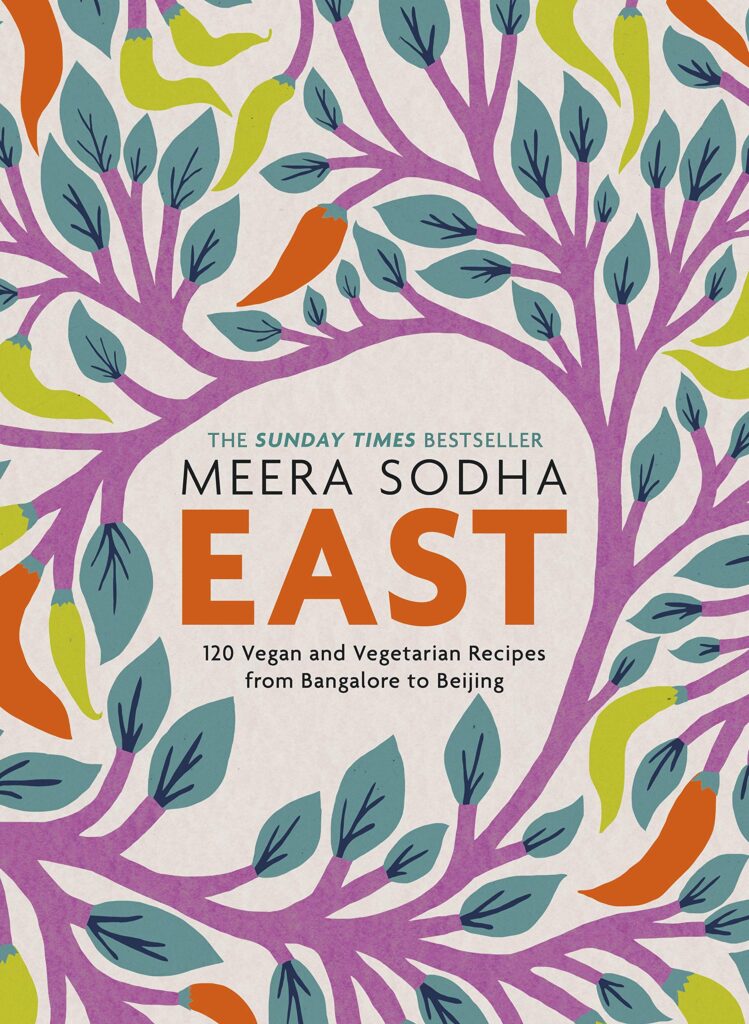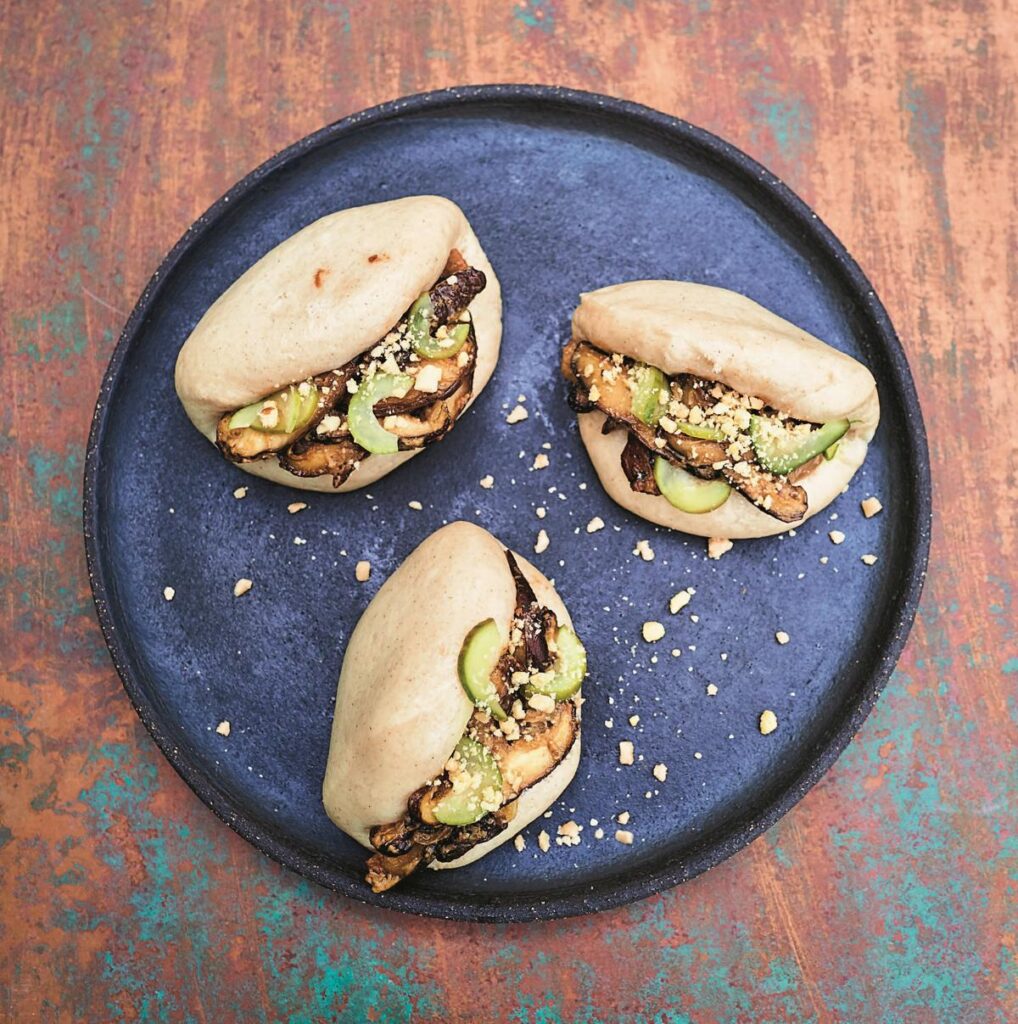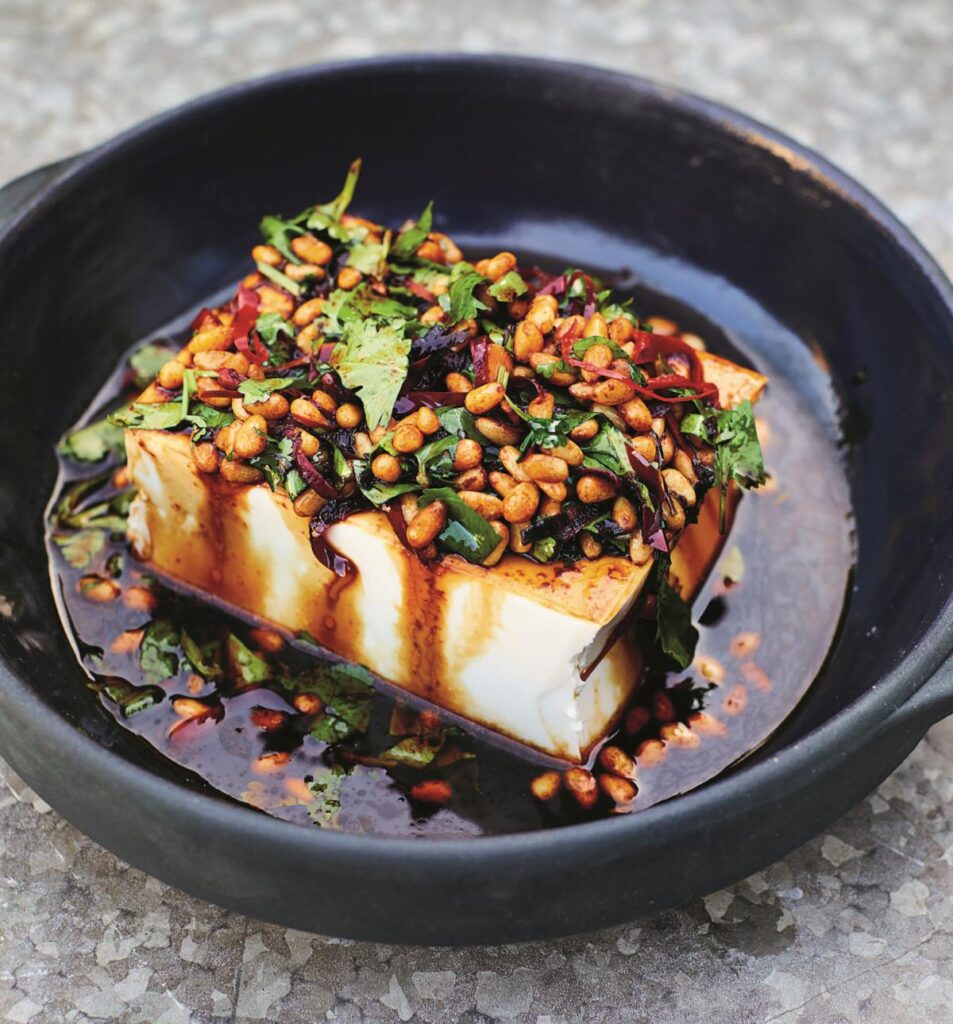
M
eera Sodha is a recipe developer and writer who contributes to the British Guardian newspaper. She is neither vegan nor vegetarian but since her brief was to write a vegan column for the paper that is what she did. East is an outgrowth of that column, first published in the UK in 2019. This 2020 edition has been revised for the North American market.
East is refreshingly free of any dietary manifesto or directives on how one should eat. As a newcomer to veganism, Sodha felt she “understood meat-eaters and knew the flavours, textures and richness they might miss.” Her aim was to create exciting plant-based recipes that didn’t compromise on flavour or the pleasures of eating.
While Sodha’s two previous cookbooks were about Indian food, East expands the geographical reach to include East Asia and Southeast Asia – from Bangalore to Beijing. The recipes are not intended to be “authentic” reproductions of regional dishes, but are inspired by the flavour profiles and ingredients of the Asian pantry.
Sodha is an experienced recipe writer and as can be expected, her recipes are clearly written, easy to follow, and most importantly, they work. An added bonus is that the majority of dishes are quick and uncomplicated to prepare– a side effect of the fact that Sodha was caring for an infant daughter while writing the book, which meant that “elaborate dishes or those that required too much time to prepare or cook were left by the wayside.”
The book is divided into chapters based on dish type — Snacks & Small Things, Salads, Noodles, Curries –and so on. An “Alternative Contents” divides recipes into categories such as Quick Dinners, Picnic Perfect, and From the Pantry etc. Recipes that are vegan or can be veganized are indicated V or VO.
Three key ingredients – noodles, rice and tofu, also have dedicated essays explaining their different types and recommended cooking methods.
The gorgeous photos by David Loftus that accompany the majority of recipes not only inspire one to get into the kitchen but also provide a helpful indication of what the finished dish should look like. This is particularly useful in a book that ranges across a variety of different cuisines that not all cooks will be familiar with.
East performed marvelously in my kitchen. First up, two Indian dishes. Rasam, a soupy dal piquant with tamarind. It was a cinch to put together and packed a real punch of flavour. I paired it with Mashed Potato Paratha. Made without a raising agent, and with the added bulk of potato, the texture of this paratha is more like a pancake or fritter than a flatbread. The flavour is subtle but nicely enhanced by an accompanying dollop of yogurt and quickly made lemon pickle.
East is as enjoyable to read as it is to cook from. Here’s Sodha’s headnote for the recipe for Mushroom Bao.
“There is genuine pleasure to be had in things that feel just right: the weight of a pound coin, a bath at the perfect temperature, the feel of a well-worn wooden spoon. To this list, I’d add the bao: this little bun, a staple of Taiwanese street-food stalls, is ergonomically designed for eating—it fits snugly into the nook of a hand; the pillowy dough gives like memory foam; and the semicircular shape slots cleanly into the mouth.”

I don’t know if it was because I used the dough setting on my bread machine instead of mixing by hand, or some quirk of Canadian ingredients, but in the steamer my bao swelled to twice the size of the little hand-held treats expected. Dainty they were not, but the buns were soft and fluffy and stuffed with the umami-packed mushroom filling, heavenly tasting. Sodha calls for a mix of oyster and shiitake mushrooms but I used plain old buttons, with some rehydrated dried shiitakes for texture. The sauce that coats the mushrooms is so intensely flavoured that even if you use button mushrooms alone, I am confident you’ll have a very tasty bun.
Kung Pao Cauliflower, inspired by Sichuan gong bao, was another successful recipe, with peanuts, Sichuan peppercorns, chiles and green onions providing loads of flavour to cauliflower florets that are roasted in the oven.
Tofu is an excellent source of protein for vegetarians and vegans but on its own it is bland both in texture and taste. Sodha solves these problems with a variety of cooking methods and boldly flavoured ingredients.
Chile Tofu is a riff on Chile Paneer, an Indo-Chinese recipe from Kolkata with tofu taking the place of the Indian cheese. The tofu is dusted in cornstarch and panfried for a crispy edge, then glazed in a hot, sweet, sticky soy-and-tomato sauce with red and green bell peppers adding freshness and crunch. With steamed rice, this is a complete meal in a bowl, delicious and despite having several components, easy to pull together.
Honey, Soy and Ginger Braised Tofu takes inspiration from the Korean dish dubu jorim. I was dubious about the addition of a “rogue ingredient” – Bartlett pear – but it did, as promised, “add a lovely body and sweetness to the dish.” I followed Sodha’s suggestion and doubled the amount of sauce (liquid ingredients only). A single batch would have been plenty to coat the tofu but there was payoff in the excess. The leftover sauce made a delicious dip for gyoza and was revelatory added to a bowl of ramen.

Silken Tofu with Pine Nuts and Pickled Chiles was my favourite among the recipes (all good!) that I tested. When I lived in Tokyo, I ate hiyayakko almost every day during the summer months. The Japanese dish of chilled tofu is topped with raw green onions, bonito flakes, ginger and soy sauce. Sodha’s riff, with sautéed green onions and pinenuts added to a slightly more complex sauce, is quite different in flavour profile but equally delicious. And while hiyayakko is definitely a summer dish, this version, with its warm sauce and toasted nuts, is suitable for any season.
The success of East is in bringing a world of flavour to the vegetarian table without the need for hours in the kitchen or an extensive, international pantry. Sodha’s substitution of supermarket ingredients for more esoteric ones that may be harder to find, is both innovative and clever. It doesn’t matter a jot that the recipes are not faithful to any particular cuisine, what does matter is that they are carefully crafted by a cook who understands complementarities of flavour and possesses the skill required to combine elements of different cuisines harmoniously. Above all, Sodha’s recipes are sophisticated in concept but simple to execute, and that makes East, among the growing list of cookbooks catering to the trend toward more vegetable-forward cooking, a front runner.


